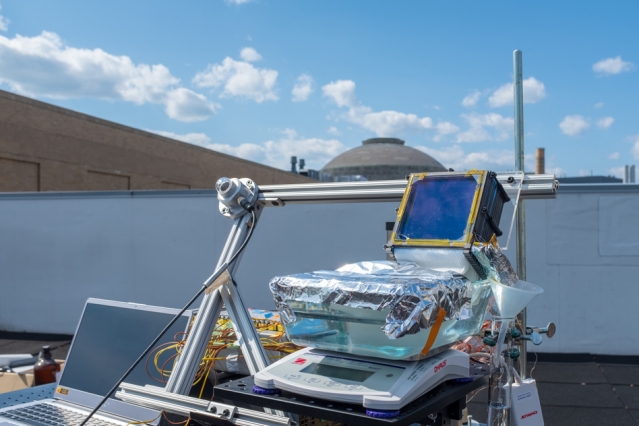About 1% of the world’s population is dependent on desalinated water to meet daily needs, but water scarcity is a growing problem that experts believe will affect 14% of the world’s population within the next five years.
Desalination takes much more energy than, for example, transporting fresh water over large distances. In general, desalination costs are much higher than those associated with fresh water, but beyond costs, freshwater is simply not always available.
Researchers at MIT and Shanghai Jiao Tong University in China have developed a completely passive solar-powered desalination system that could provide more than 1.5 gallons of fresh drinking water per hour for every square meter of solar collecting area. Such a system could provide an efficient, low-cost water source for coastal areas that are off the grid.
The system uses multiple layers of flat solar evaporators and condensers topped with transparent aerogel insulation. The key to its efficiency is the way it uses each of its multiple stages to desalinate water. At each stage, heat released by the previous stage is harnessed instead of wasted. The proof-of-concept device, which was tested on an MIT building rooftop, produced more than twice as much water as the record amount produced by any previous passive solar-powered desalination system.
The researchers plan further experiments aimed at optimizing the choice of materials and configurations and to test the system under realistic conditions. The hope is to have a technology that can play a role in alleviating water scarcity in parts of the world where electricity is scarce, but seawater and sunlight are abundant.
**********
Web Links
Simple, solar-powered water desalination
Photo courtesy of MIT/researchers.
Earth Wise is a production of WAMC Northeast Public Radio.


